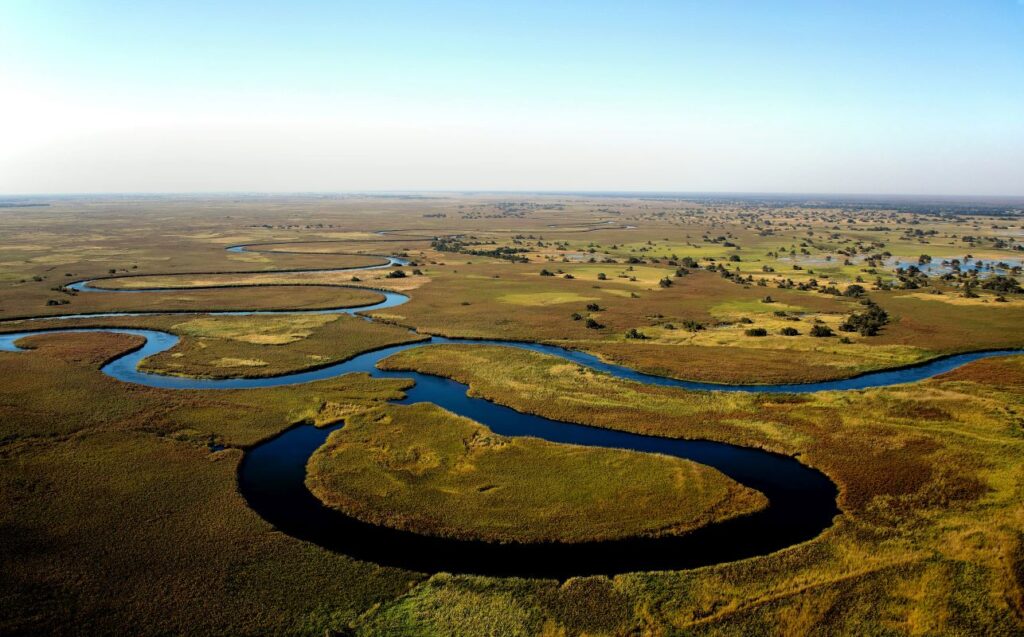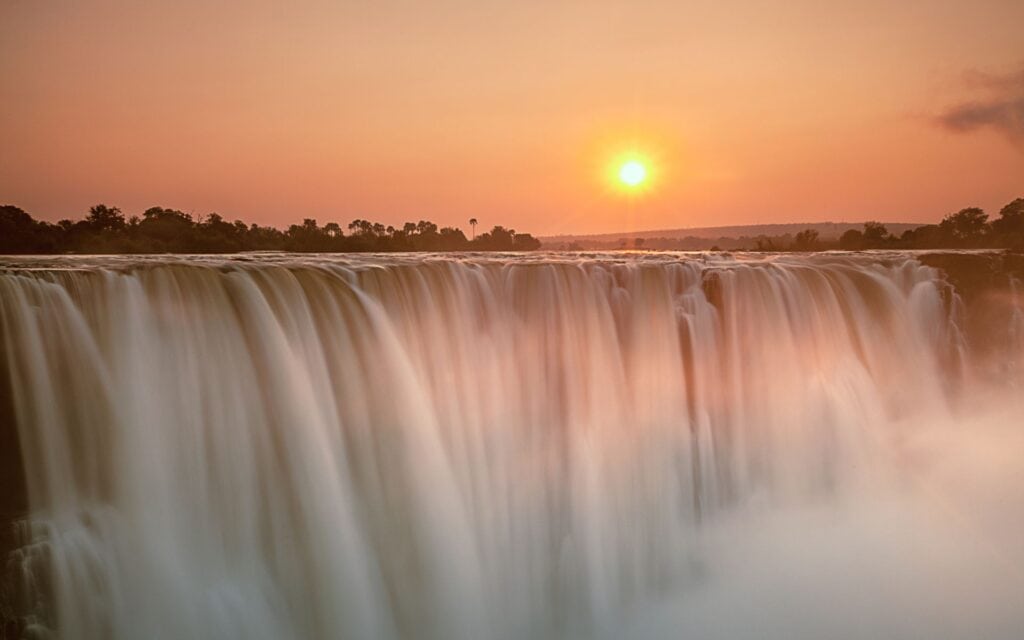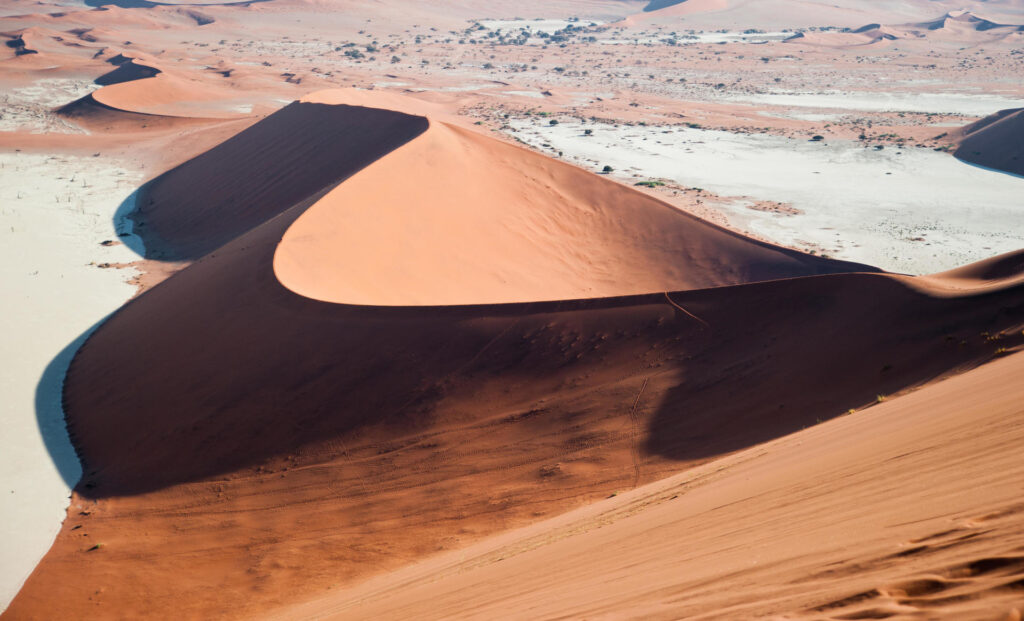Southern Africa encompasses some of the world’s most sought-after wildlife and nature-based experiences, with year-round appeal.
Whether you’re planning to explore the golden savannahs of Kruger National Park, the verdant wetlands of the Okavango Delta, or the majestic Victoria Falls, understanding the region’s climate and seasonal patterns will help you make the most of your trip.
This comprehensive guide provides insights into the best times to visit Southern Africa, detailing high and low seasons, dry and wet seasons, and a month-by-month breakdown of what you can expect.
High vs. Low Season

Southern Africa’s high season, from June to October, is the best time for wildlife viewing. Clear skies, minimal rainfall, and cooler temperatures create ideal conditions for spotting animals as they gather around water sources.
This period is particularly popular for visiting Kruger National Park, the Okavango Delta, and Victoria Falls. However, high season also means higher prices and more tourists.
The low season, from November to May, coincides with the rainy season, offering lush, green landscapes and fewer tourists.
Although travel can be more challenging due to muddy roads and dense vegetation, this period is excellent for birdwatching, as migratory species flock to the region. Additionally, the low season provides better value for money with discounted rates on accommodations and tours.
Dry vs. Wet Season

The dry season, from June to October, is characterized by sunny days and cool nights, providing excellent conditions for wildlife viewing. Animals are easier to spot as they congregate around shrinking water sources. This season is also ideal for activities such as game drives, walking safaris, and visiting cultural sites.
The wet season, from November to May, transforms the landscapes into vibrant green vistas.
While wildlife may be more dispersed, the scenery is stunning, and birdwatching is at its peak. The rains bring new life, with many animals giving birth, resulting in plentiful predator-prey interactions. Despite occasional downpours, the wet season offers a more tranquil and immersive experience.
Month-to-Month Guide

January In the middle of the wet season, this month brings lush landscapes and fewer tourists. Average temperatures range from 20°C to 30°C, with occasional afternoon showers. Rainfall averages around 100-150mm. It’s a great time for birdwatching, particularly in Botswana’s Okavango Delta and Chobe National Park, where migratory birds are abundant. The verdant scenery also makes it an excellent time for photography, with Botswana offering rich birdlife and vibrant, green landscapes.
February Continuing the wet season, temperatures remain warm with frequent rains, ranging from 20°C to 30°C. Rainfall averages around 100-200mm. The landscape stays green and vibrant, making it ideal for birdwatching and photography. Victoria Falls is at its most spectacular, with high water levels creating a dramatic display. Wildlife viewing is still good, particularly in regions like Namibia’s Etosha National Park, where animals are drawn to waterholes. Namibia and Zimbabwe provide dramatic landscapes and impressive wildlife sightings for nature enthusiasts.
March At the tail end of the wet season, temperatures range from 18°C to 28°C. Rainfall averages around 80-150mm. The rains start to taper off, but the landscape remains lush. This is an excellent time for game drives in Kruger National Park and Hwange National Park, as animals begin to move more freely. Visiting the Kalahari Desert is also ideal as the rains bring the desert to life with wildflowers and greenery. South Africa and Zimbabwe offer vibrant landscapes and active wildlife, ideal for safaris.
April Diminishing rains and cooler temperatures, averaging between 16°C and 26°C, mark this month. Rainfall averages around 50-100mm. The landscapes are still green, making it a great time for wildlife photography and game viewing. The Okavango Delta starts to flood, creating a unique environment for mokoro (canoe) safaris. Birdwatching remains excellent, and the reduced rainfall makes travel easier. Botswana and South Africa provide lush landscapes and fantastic wildlife viewing opportunities.
May The beginning of the dry season brings temperatures ranging from 14°C to 24°C. Rainfall averages around 10-50mm. The weather is cooler, and the landscapes begin to dry out. Ideal for visiting Botswana’s Moremi Game Reserve and Namibia’s Sossusvlei, wildlife becomes easier to spot as animals gather around shrinking water sources. It’s also an excellent time for exploring the Zambezi River and Victoria Falls before the peak tourist season. Namibia and Botswana provide stunning desert landscapes and excellent wildlife viewing as the dry season begins.
June Ushering in the cool, dry season, temperatures average between 10°C and 20°C. Rainfall averages around 5-20mm. This is one of the best times for wildlife viewing, especially in Kruger National Park and the Okavango Delta. Clear skies and dry conditions are perfect for game drives, walking safaris, and gorilla trekking in Rwanda. Also ideal for visiting the lush vineyards of the Cape Winelands in South Africa. South Africa and Botswana offer excellent wildlife viewing and beautiful scenery, ideal for safaris and wine tours.
July Part of the peak dry season, this month provides excellent conditions for safaris. Temperatures range from 8°C to 18°C, with clear skies and cool nights. Rainfall averages around 5-10mm. The Great Migration in Tanzania and Kenya is at its height, and southern Africa’s parks are teeming with wildlife. It’s also a perfect time for visiting Cape Town and its surrounding attractions, such as Table Mountain and Robben Island. South Africa and Tanzania offer incredible wildlife experiences and iconic landscapes, perfect for adventure and exploration.
August Continuing the peak dry season, temperatures range between 10°C and 20°C. Rainfall averages around 5-10mm. Ideal for game viewing in Botswana’s Chobe National Park and Namibia’s Etosha National Park, the Victoria Falls remain impressive, though water levels begin to drop. Dry conditions and cool temperatures are perfect for safaris and exploring southern Africa’s diverse landscapes. Botswana and Namibia provide abundant wildlife and stunning natural beauty, perfect for safaris.
September Warm and dry conditions prevail with temperatures ranging from 12°C to 24°C. Rainfall averages around 5-15mm. Wildlife viewing is at its best in Kruger National Park, Hwange National Park, and the Okavango Delta. The water levels in the Okavango Delta start to recede, concentrating wildlife around permanent water sources. A great time for visiting Namibia’s Skeleton Coast for its unique desert scenery. South Africa and Botswana offer prime wildlife viewing and unique landscapes, ideal for adventure.
October At the end of the dry season, temperatures range from 14°C to 28°C. Rainfall averages around 5-20mm. Dry landscapes make it easy to spot wildlife at waterholes and rivers. This is a prime time for safaris in Botswana and Zambia. The Kalahari Desert and the Cape Winelands offer pleasant weather and stunning landscapes. Botswana’s safari destinations and South Africa’s Cape Winelands provide excellent wildlife viewing and picturesque landscapes, ideal for exploration and relaxation.
November The beginning of the rainy season brings temperatures ranging from 18°C to 30°C. Rainfall averages around 50-100mm. Early rains create a fresh, green landscape, attracting migratory birds. Ideal for birdwatching in the Okavango Delta and Chobe National Park, the rains also rejuvenate the scenery in Namibia’s Sossusvlei and Botswana’s Makgadikgadi Pans, making it an excellent time for photography. Botswana and Namibia offer lush landscapes and abundant birdlife, ideal for birdwatchers and photographers.
December With warm temperatures between 20°C and 32°C, this month continues the rainy season. Rainfall averages around 100-150mm. The landscape is lush, and wildlife viewing is still good in many areas. An excellent time for visiting Victoria Falls, which is less crowded yet still impressive. The rains bring the Kalahari Desert to life, making it a unique time to explore this fascinating region. Zimbabwe’s Victoria Falls and Botswana’s Kalahari Desert offer stunning landscapes and unique wildlife experiences, perfect for adventure and exploration.
Southern Africa is a region of unparalleled beauty and diversity, offering something for every traveller throughout the year. The best times to visit depend on what you seek.
For exceptional wildlife viewing, particularly during the Great Migration and prime game drives, the dry seasons from June to October are ideal.
The wet seasons from November to May offer unique advantages with its lush, green landscapes, vibrant birdlife, and fewer tourists. The low season also means more tranquil parks and better value for money.
Whether you choose the bustling high season or the serene low season, Southern Africa promises unforgettable adventures and awe-inspiring natural beauty. Plan your trip to this remarkable region and experience the magic of Southern Africa at its finest.




















